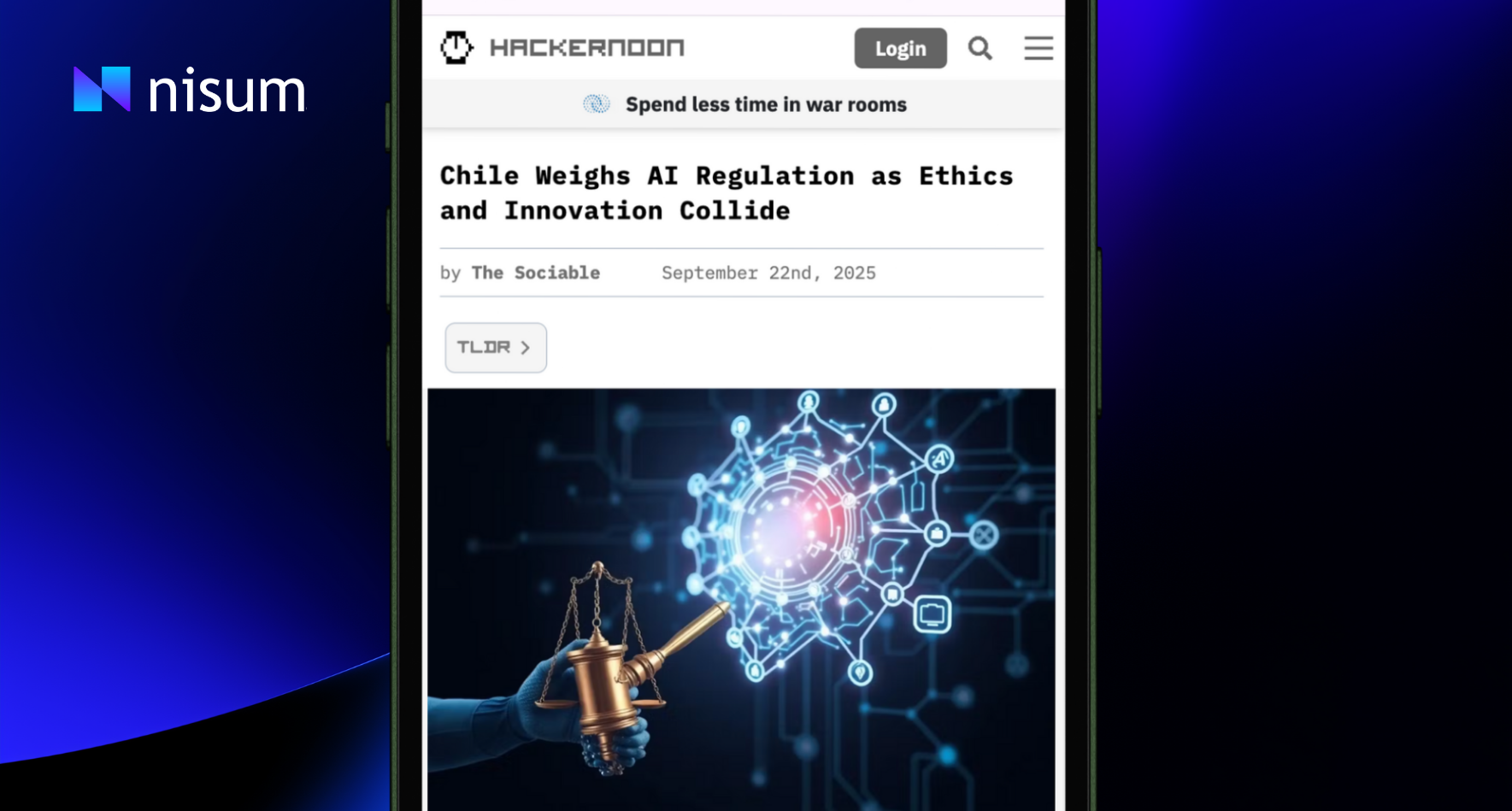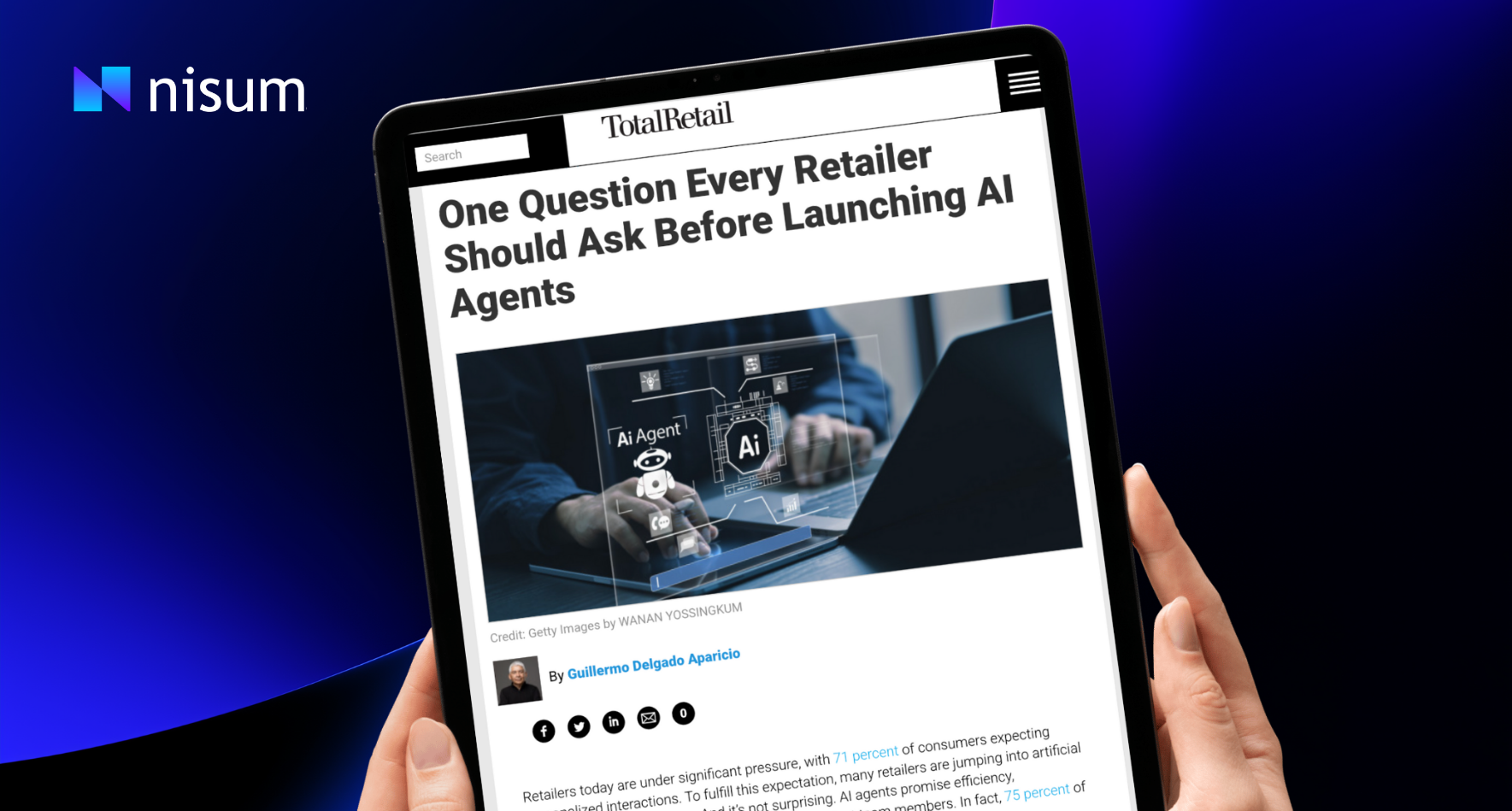
When artificial intelligence fails, it’s not the code that breaks; it’s the relationship.
Premature AI deployments don’t just cause performance issues; they create trust debt, a hidden liability that grows every time an AI system disappoints or confuses a customer.
In his guest article for CustomerThink, Guillermo Delgado, Nisum’s Global AI Leader, explained how rushing to deploy AI before it’s ready erodes credibility and weakens customer confidence. This follow-up explores the next step: how leaders can repair and rebuild trust once it’s been lost.
Understanding Trust Debt
Trust debt accumulates when organizations push AI into production faster than they can ensure fairness, transparency, or control. Customers lose faith not because they reject technology, but because they feel excluded or misled by it.
Like financial debt, trust debt compounds. Every failed chatbot interaction, biased recommendation, or inaccurate prediction increases the cost of future innovation. To restore confidence, leaders need to take responsibility for what went wrong and implement a clear plan for correction.
How to Fix AI Trust Debt
Recovering customer trust requires honesty, visibility, and consistent engagement. Leaders cannot simply patch a system and move on; they must rebuild credibility through design, communication, and accountability.
Below is a practical AI Trust Recovery Checklist for organizations facing trust erosion after AI missteps.
The AI Trust Recovery Checklist
1. Admit the Failure and Acknowledge Impact
Customers forgive mistakes faster than they forgive silence. Be transparent about what went wrong, what was learned, and how it will be prevented in the future.
- Communicate openly through owned channels such as customer emails or in-app updates.
- Use clear, human language instead of technical jargon.
- Focus on how the issue affected customers rather than on the system itself.
2. Rehumanize the Interaction
Trust is rebuilt through people, not policies. Reinstate a human layer in the customer experience wherever AI has failed.
- Allow customers to easily escalate from AI to human support.
- Use personal follow-ups to show accountability and empathy.
- Gather direct customer feedback to reshape AI responses around real needs.
3. Audit the Damage and Isolate the Root Cause
Before relaunching, analyze how and why the trust breach occurred.
- Review data sources, model assumptions, and decision logic.
- Identify where the human-in-the-loop failed to intervene or correct errors in time.
- Determine whether bias, incomplete data, or poor communication created the breakdown.
- Quantify the reputational and engagement impact to guide priorities for rebuilding.
4. Rebuild Transparency
Trust returns when customers can see how AI works and who is responsible for it.
- Publish short explainability summaries that describe what the system does and how decisions are made.
- Give users visibility into data use, personalization choices, and feedback options.
- Ensure customers can see improvements over time.
5. Engage Customers in the Fix
Turning failure into collaboration creates credibility.
- Invite loyal customers or beta users to co-test improvements.
- Communicate updates as shared progress, not damage control.
- Treat satisfaction and engagement as key metrics of regained trust.
6. Institutionalize Learning
Every incident of trust debt should become a blueprint for prevention.
- Integrate lessons into governance and development standards.
- Train teams on ethical design and proactive communication.
- Recognize accountability as a marker of maturity, not failure.
From Trust Debt to Trust Dividend
Repairing trust is not just a defensive act; it’s a growth strategy.
When companies admit mistakes, reintroduce human care, and involve customers in recovery, they transform disappointment into loyalty.
At Nisum, we help organizations design and scale AI systems that are not only intelligent but trustworthy, creating solutions that strengthen customer engagement through governance, transparency, and accountability.
The result is a trust dividend: a compounding advantage where every transparent action reinforces credibility and deepens customer relationships.
As Guillermo Delgado noted in CustomerThink, the question isn’t how fast we can deploy AI, but how faithfully we can earn trust. Technology drives innovation, but trust drives adoption.



